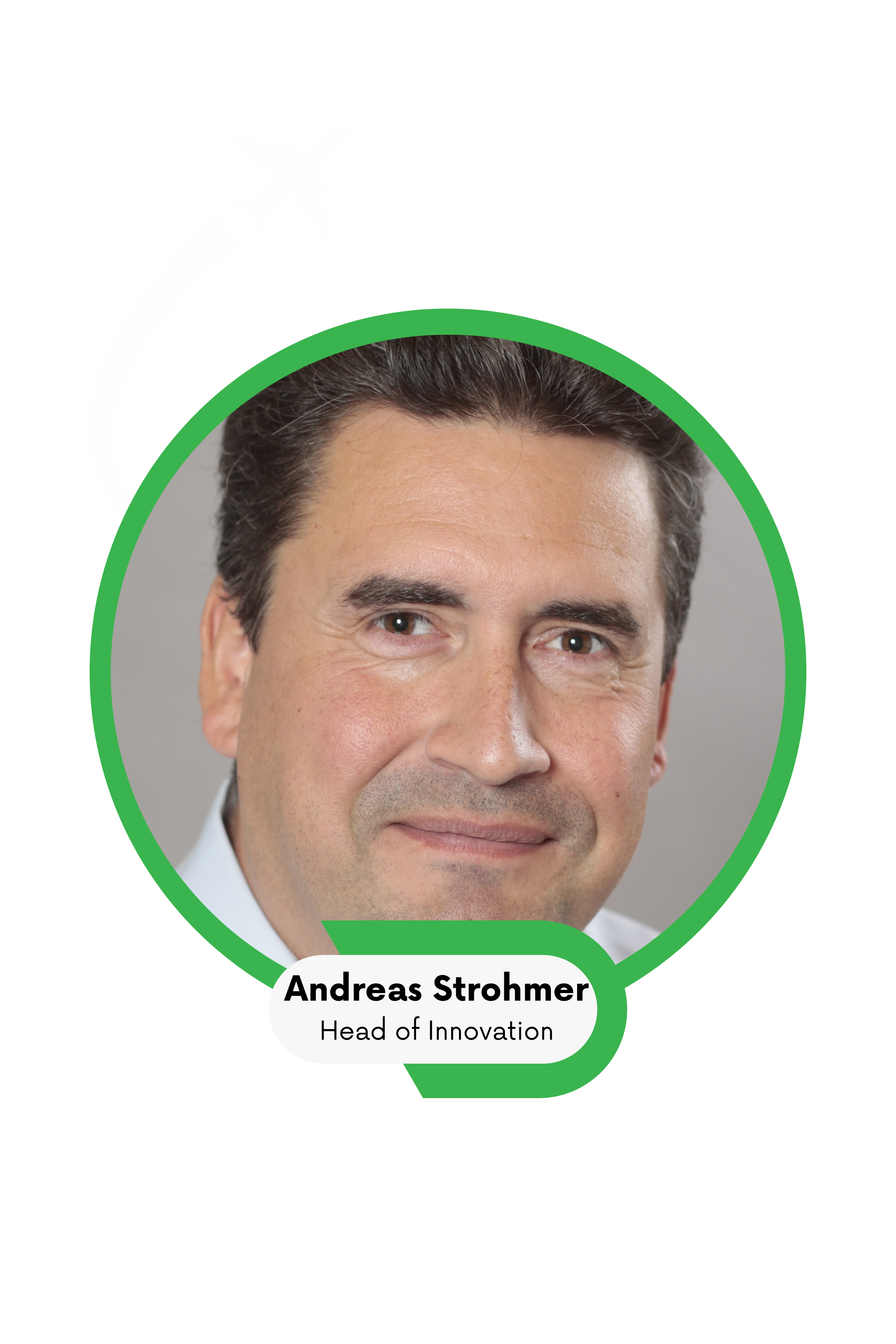Personal Information
- Name: Andreas Strohmer
- Position/Title: Head of innovation
- Department: Innovation Division
Professional Background
Briefly describe your professional background and area of expertise:
I studied Business Engineering at Wiener Neustadt. I have 20 years of experience in electronic development. After that, I transitioned to the Innovation Department at TEST-FUCHS, where we focused on integrating new technologies into the company. These technologies include modularization, digitalization, IoT, AI, additive 3D printing, and hydrogen technology.
What inspired you to pursue a career in this related field, e.g., aviation, carbon-free emissions etc?:
Bringing humans to fly is one of the most inspiring technologies ever developed. It offers daily learning opportunities and showcases technology everywhere. The industry is filled with various exciting companies, making collaboration a thrilling experience. Since aviation is served by only a limited number of suppliers and participants, achieving a zero-emission target is foreseeable with the right technology, even if there are still some problems to be solved.
Role in H2ELIOS
What is your role in the H2ELIOS project?
I primarily work on proposals for TEST-FUCHS activities, aiming to position the company in the right areas. Later, I formed a team capable of meeting these requirements. I am involved in solving complex issues and making critical decisions. One of my tasks is to guide the team and the project to ensure we stay focused on the main objectives.
Can you describe your main responsibilities and tasks?
I provide substantial support to the TEST-FUCHS project manager and Lead Engineers for complex decisions and problem-solving. I am involved in developing electronic components such as the fuel level sensor, electrical heater, and hydrogen controller. These tasks fall under Work Package 4 (Subsystem development).
How does your work contribute to the overall goals of the H2ELIOS project?:
The H2ELIOS project is developing an innovative solution for a liquid-hydrogen tank for aviation applications. The team is working on new solutions to adapt the typically heavy vacuum tank to meet the lightweight requirements of the aviation industry. As new technological challenges arise, my team and I tackle them piece by piece.
Project Insights
What do you find most exciting about working on the H2ELIOS project?
The most exciting aspect is collaborating with H2ELIOS partners and partner companies. The project members are well-aligned with the needs of developing this innovative solution. Partners are located across Europe, working together towards a common goal.
What has been the most challenging aspect of your work on this project?
The most challenging aspect has been and continues to be the change of materials and insulation from a state-of-the-art tank to a potentially more competitive one. New simulations, production and assembly processes, and testing are necessary to verify this new solution.
Can you share a significant milestone or achievement your team has reached so far?
We have already reached the Preliminary Design Review (PDR) for the hydrogen management circuit and are currently preparing the Critical Design Review (CDR) for the cold box, where all essential fluid circuits are integrated.
“The most challenging aspect has been and continues to be the change of materials and insulation from a state-of-the-art tank to a potentially more competitive one. New simulations, production and assembly processes, and testing are necessary to verify this new solution.”
Personal Experience
What have you learned during your time working on H2ELIOS?
Personally, I had little experience in tank technologies and cryogenic hydrogen before. This has changed significantly. Together with the engineering team and involved partners, we have tackled each emerging problem piece by piece. This process is ongoing. Additionally, we have learned a lot from the experiences and capabilities of our partners and their ways of working.
How has this project influenced your professional development?:
I usually learn from each project, but the innovative approach of H2ELIOS has significantly enhanced my learning, especially in tank and hydrogen technology. Additionally, working on a European Joint Undertaking for the first time has greatly influenced my professional development.
“The most exciting aspect is collaborating with H2ELIOS partners and partner companies. The project members are well-aligned with the needs of developing this innovative solution. Partners are located across Europe, working together towards a common goal.”
Fun Facts
What do you enjoy doing in your free time?
Personally, I am the king of home projects. I always have 3-4 construction sites or tasks to complete, whether it's gardening, woodworking, or iron constructions—there's always something to do. I rarely need craftsmen. Besides that, I enjoy riding my bike through the landscape and discovering new places in Europe.
Share a fun fact about yourself that your colleagues might not know:
I'm probably the only Austrian who can't ski properly.
“For a truly innovative solution, engineers need the freedom to think creatively and switch to different technologies. This process takes time and should not be constrained by proposal deadlines. Otherwise, the result may not be the best possible.”
Closing Thoughts
Is there anything else you would like to share about your experience with the H2ELIOS project?:
One important lesson is that for a truly innovative solution, engineers need the freedom to think creatively and switch to different technologies. This process takes time and should not be constrained by proposal deadlines. Otherwise, the result may not be the best possible
